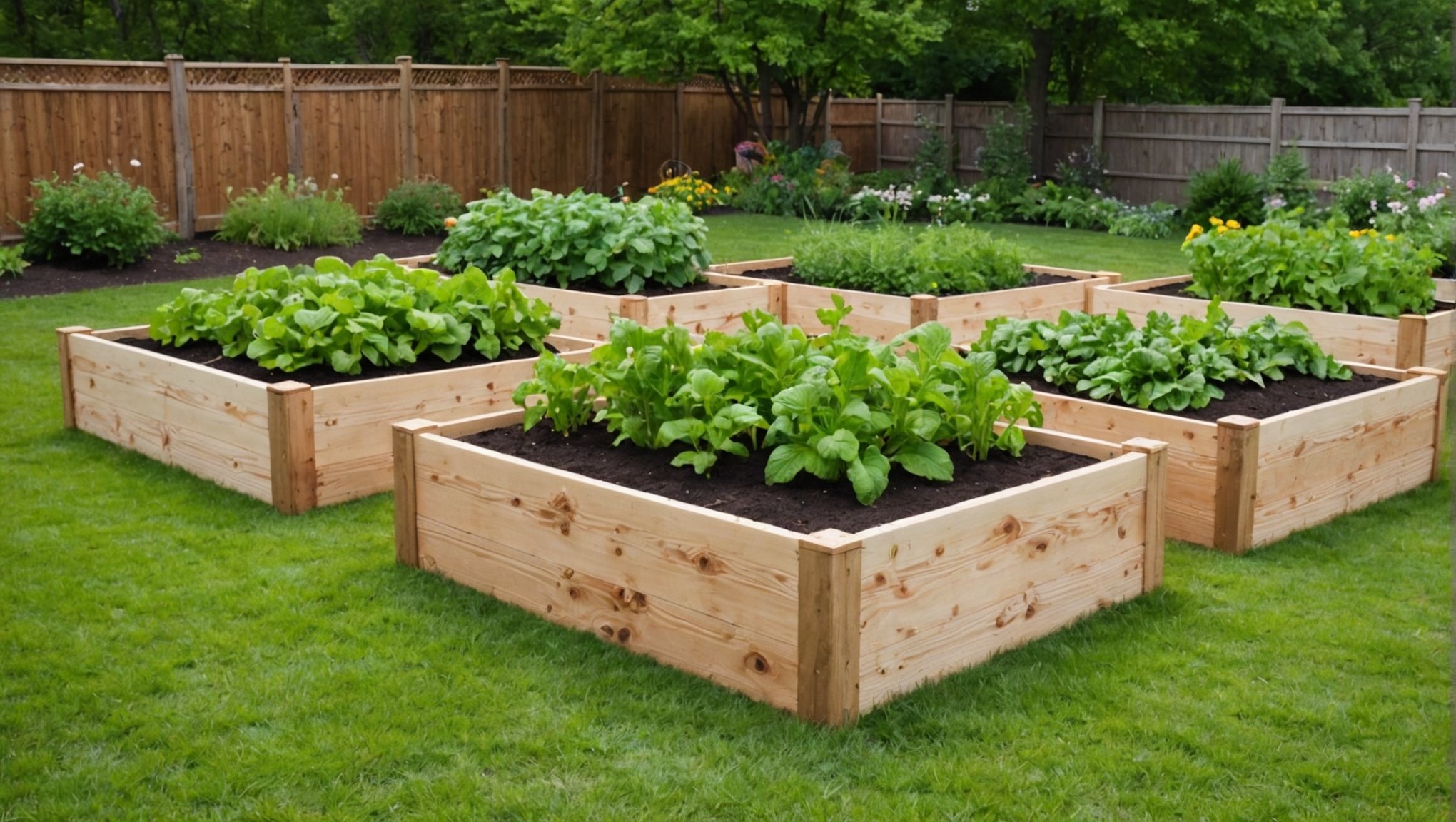How to optimize the use of raised beds?

Optimizing the Use of Raised Beds
Planning and Organizing Raised Beds
Start by choosing the right location for your raised garden bed. Position the beds from north to south to maximize sun exposure. Install them near a water source to facilitate irrigation, especially in the summer. Use durable materials such as treated wood or BACSAC® fabric structures for more flexibility.
Also read: How to Enhance the Sound System in a Mercedes-Benz C-Class with a Premium Amplifier?
Also read : What’s the Best Way to Insulate and Ventilate an Attic Used as a Home Office?
Soil Preparation and Amendment
Good soil is crucial. Mix garden soil, compost, and organic matter to create a nutrient-rich environment. Adding layers of felt inside the structures can protect the roots and regulate evaporation. Consider installing a trellis for climbing plants, thus increasing the growing area.
Material Selection and Orientation
Opt for abrasion-resistant and permeable materials to allow the soil to breathe. Fabric beds are ideal for permaculture and lasagna gardening. The combination of these elements fosters a natural environment, promoting the growth of robust and healthy plants. For more information, you can purchase them from this trusted website.
In the same genre : How to Design a Barrier-Free Shower for Elderly Household Members?
Topic to read: Can You Enhance the Off-Road Capabilities of a Toyota RAV4 with a Suspension Lift Kit?
Watering and Irrigation Techniques for Raised Beds
Efficient Watering and Water Conservation
Optimizing irrigation for raised beds starts with manual watering. Use a watering can or a hose with an adjustable nozzle to direct water straight to the roots. Water early in the morning or in the evening to minimize evaporation. Mulching around plants also helps retain soil moisture, reducing the frequency of watering.
Installing Irrigation Systems
For more automated water management, consider installing drip irrigation systems. These systems deliver water directly to the roots, minimizing evaporation losses and ensuring even distribution. Irrigation hoses can be placed under the mulch for maximum efficiency. Make sure the system has a timer to adjust watering schedules according to seasonal needs.
Moisture Management and Prevention of Drying Out
Regularly monitor soil moisture to prevent drying out. Using moisture sensors can help determine when to water. BACSAC® fabric containers, due to their permeability, facilitate moisture management by allowing excess water to drain while retaining enough moisture for the roots.
Maintenance and Upkeep of Raised Beds
Seasonal Maintenance Routines
Regular maintenance is essential to ensure the longevity and productivity of your raised beds. In the spring, add compost to replenish soil nutrients. In summer, monitor moisture levels and adjust irrigation. In autumn, remove dead plants and prepare the soil for winter by adding mulch. Winter is an ideal time to repair or replace damaged structures.
Pest Control Techniques
Garden pests can quickly invade your raised beds if preventive measures are not taken. Use physical barriers like nets or cloches to protect young plants. Companion plants like marigolds or nasturtiums can also repel certain harmful insects. In case of infestation, natural solutions like insecticidal soap and neem oil are effective.
Using Mulch and Compost
Mulching is crucial for maintaining soil moisture and reducing weed growth. Use organic materials like straw, dead leaves, or wood chips. Compost enriches the soil with nutrients and improves its structure. Apply a layer of compost at the start of each growing season for healthier, more vigorous plants.
